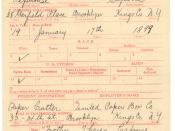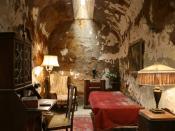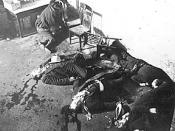The Rise of Gangsters & Al Capone Prohibition was a good thought, but no one knew it would be impossible to enforce. The eighteenth amendment, passed in 1919, lead to the growth of organized crime. The Gangsters intended to take full advantage of the money making opportunities that prohibition offered. The most innovative were Johnny Torrio, Lucky Luciano, and Alphonse Capone. The three began as a Street gang in Brooklyn. Torrio was the leader. Eventually Luciano went his own way. Torrio moved to Chicago in 1909 to help run a giant Brothel business, and in 1920 Capone joined him. Capone became Torrio's right hand man. The two made a fortune on the illegal brewing, distilling and distribution of beer and liquor. In 1925 Capone became the boss man when Torrio was wounded in an assassination attempt. Torrio retired and went back to New York.
Al Capone was born in 1899 by immigrants.
He dropped out of school when he was eleven. That's when he met Torrio and the gang, but anyway Capone ruled organized crime in Chicago from 1925 through 1931. Capone developed a fierce reputation as a ruthless competitor for rights to the alcohol distribution in Chicago. Rival Gangs were eliminated and the Suburb of Cicero was Capone's kingdom.
The Saint Valentines Day Massacre on February 14, 1929 is regarded as the most violent episode in the Chicago gang era. Seven Members of Bugs Moran's mob were shot with machine guns against a garage wall. Rival gang members posing as police shot them. Most of the evidence pointed to Capone's mob, even though he was in Florida at the time. The true identity of the killers will probably never be revealed.
The Bureau's investigation of Capone came about from his reluctance to appear before a Grand Jury on...


